Beverly Gray's Blog: Beverly in Movieland, page 100
April 22, 2016
"Brush Up Your Shakespeare" -- The Bard at the Movies
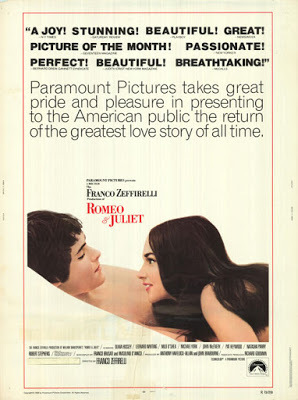
Tomorrow, April 23, will mark the 400th anniversary of the death of William Shakespeare (1564-1616) who wrote -- or did not write, according to some curmudgeons -- the greatest plays in the English language. Shakespeare was clearly an efficient man: note his skill at re-purposing plot devices, many of them stolen from the writings of others. That’s why it makes a weird sort of sense that he was also apparently born on April 23. So the day is cause for a double celebration. But, no, I don’t plan to serve cake.
Shakespeare, of course, didn’t know from movies. But I suspect he would have enjoyed their ability to capture spectacle in a way that the stage of the Globe Theater could not. Some of the greatest movies made from his plays (and there have been many) have reveled in the visual possibilities of the medium. I’m thinking particularly of Laurence Olivier’s stirring production of Henry V, a tale of military heroism which raised the spirits of the British people in the dark days of World War II. (By contrast there was Kenneth Branagh’s equally impressive 1989 film adaptation of the same play, which saw war in a much darker light.)
I see before me not a dagger (English majors will note the Macbeth reference) but a fancy program booklet my mother bought for 25 cents when she attended a screening of MGM’s Romeo and Juliet on November 15, 1936. (She was nice enough to write the date on the cover.) Clearly, the film’s debut was a very big deal. It was, as the booklet makes quite clear, the first Romeo and Juliet ever to be put on film. The prestige production, directed by George Cukor and overseen by MGM’s Irving Thalberg, starred Leslie Howard along with Thalberg’s lovely wife, Norma Shearer, supported by such well-known thespians as John Barrymore (Mercutio), Edna May Oliver (Juliet’s Nurse), and Basil Rathbone (Tybalt). Andy Devine’s there too, in the comic role of the Nurse’s manservant. I first saw this Romeo and Juliet when I was college-age. What immediately struck me is how stiff and prim everyone is . . . and how mature. Leslie Howard, the ardent “young” Romeo, was 43 when the film came out. His Juliet was in her early 30s. It’s a good film, very well-spoken, but it certainly lacks the rough-and-tumble that mark more modern adaptations.
Fortunately, in 1968, along came a Romeo and Juliet for the Baby Boom generation, directed by Italy’s Franco Zeffirelli. His depiction of old Verona is a visual treat, and he had the good sense to cast actors who were age appropriate: his Romeo (Leonard Whiting) was 18 years old, and Juliet (Olivia Hussey) a mere 15. Those of us in the throes of our own youthful romances (myself included) never quite got over the beauty and the ardor we saw on screen in this film.
Almost twenty years later, in 1996, the irrepressible Baz Luhrman had his way with Shakespeare, producing and directing a Generation X Romeo and Juliet that kept the Bard’s language but featured guns, speeding cars, and two lovers embracing in a swimming pool. Lurhman’s Romeo + Juliet featured a young and gorgeous Leonardo DiCaprio opposite the exquisite teen-aged Claire Danes. Personally, I loved the idea of seeing Shakespearean visuals updated for young hipsters while keeping the spirit of the work intact.
Then of course there is West Side Story (1961), which turns feuding families into rival street gangs whose hatred of one another stems from their ethnic differences. Whatever the era, Shakespeare seems to have something to say.
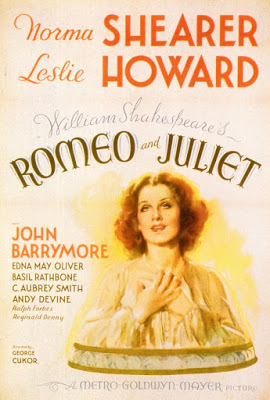
Published on April 22, 2016 11:17
April 19, 2016
Discovering the Bear Necessities in The Jungle Book

With the new live-action-meets-CGI Jungle Book topping the worldwide box office, it’s time to step back and remember what Disney wrought back in 1967, when the animated and musicalized version of Rudyard Kipling’s jungle tales was released. The 1967 film is known as the last animated feature personally supervised by Walt Disney himself, prior to his death on December 15, 1966. More so than the current version—which contains moments of genuine darkness that seek to entice older viewers—the 1967 Jungle Book is mostly light-hearted, crammed full of comedy and jazzy musical numbers.
One of the 1967 Jungle Book’s innovations was its use of well-known celebrities to provide voices for the animated characters. This tradition today permeates film animation: stars find purely vocal roles an easy paycheck, and enjoy participating in family-friendly projects they can show to their young children. Think of Tom Hanks and Tim Allen in the Toy Story films, or of James Earl Jones and Jeremy Irons in The Lion King (not to mention Robin Williams in Aladdin) to realize the importance we place today on appealing and above all familiar voices. The current Jungle Book is no exception: its all-star cast features such Hollywood leading lights as Bill Murray (Baloo the Bear), Ben Kingsley (Bagheera the Panther), Idris Elba (the dangerous tiger Shere Khan), Scarlett Johansson (an insssinuating Kaa the Python), and none other than Christopher Walken as the king of the apes. Even the late Garry Shandling makes an appearance.
Neal Gabler, in his masterful biography, Walt Disney: The Triumph of the American Imagination , gives an account of how celebrity voices came to be used in the 1967 film. It seems Disney—preoccupied with his idea of building Florida’s EPCOT Center—had little use for this particular film project. When he was finally persuaded to look in on what his animation staff was up to, he was not pleased. He found the story too sober, and the “man-cub” Mowgli not particularly appealing. As Gabler puts it, “despite his preoccupation with other projects and his lack of interest in this one, [Walt Disney] quickly salvaged the production, as he had done so many times in the past, by suggesting that singer Phil Harris, known for his loose, boozy, throwaway style, voice a bear named Baloo who befriends Mowgli.” Disney loved Phil Harris’s test track, and was soon full of ideas about how this lively character could help transform the project. Here’s Gabler once again: “The bear, who had been intended as a minor figure, became the film’s co-star, converting the picture from a series of disconnected adventures into the story of a boy and his hedonistic mentor—a jungle Hal and Falstaff.”
All of this might be correct, but years ago I heard a slightly different tale from Hal Smith, a versatile comic actor known to some as Otis Campbell, the town drunk, on the Andy Griffith Show. Hal was an experienced voice-actor, who’d worked for Disney on a Winnie the Pooh short. When he came in to audition for Baloo’s role in The Jungle Book, he decided to speak in the magnolias-and-husbpuppies style of Phil Harris. The Disney folk thought this was brilliant -- and promptly went out and hired Harris. Soon, such celebrity voice talent as Louis Prima were added to the mix, and were given prominent musical numbers so as to show off their musical chops. (Prima played – with panache -- a scat-singing ape, King Louie.) Thus a new approach to animation was born. Unfortunately for Hal Smith, he suffered from the rule of unintended consequences. He never worked for Disney again.
Published on April 19, 2016 09:19
April 15, 2016
Play Ball! Or “Where Have You Gone, Joe DiMaggio?”

All of SoCal’s fair-weather sports fans, including me, have spent the last few days marveling over the farewell appearance of Kobe Bryant at Staples Center. Sixty points, including a game-winner! Basketball will never be the same with Kobe missing from the Lakers’ line-up.
Still, it’s the start of baseball season, so by rights I should be paying attention to the Dodgers. Especially since another farewell season is coming up, involving someone who means the world to me and my fellow Angelenos. Yes, I’m talking about the gloriously mellow-voiced Vin Scully, who will retire at the end of 2016. The veteran play-by-play man is now 88 years old, and so he’s entitled to some rest. Meanwhile, the Dodgers have saluted him by re-naming the road up to their Chavez Ravine ballpark Vin Scully Avenue. It couldn’t have happened to a nicer guy.
If you check IMDB, Vin Scully has his share of acting credits. I don’t think there’s an Oscar in his future: he has mostly played (you guessed it) baseball announcers. But this is a man who, through years of radio broadcasting, has known how to use his voice to add color and drama. Plua, he’s got a great stock of anecdotes. In his earliest days, he used to broadcast games in the hinterlands, where all he had for input was a tickertape feed. When you only know the bare bones of what has happened (three up, three down . . .), it’s up to you to fill the empty air with excitement. He could, and he did.
There are, of course, lots of movies that deal with professional sports: football, basketball, golf, tennis, boxing. But though I haven’t conducted a survey I’m convinced that no sport has seen more screentime than baseball. It makes sense. Baseball is the essence of an American preoccupation. It’s got a long, proud history, and it’s a sport that honors individual heroes as much as it does teamwork. The game is slow enough and the uniforms are revealing enough that individual personalities shine through. That’s probably why the studios were making baseball movies way back in 1942 (Pride of the Yankees) and The Babe Ruth Story (1948). Jackie Robinson, the first African-American big league player was honored with a film in his own lifetime: The Jackie Robinson Story (1950). Since Robinson played himself, the movie was more than a bit stiff and polite. But that was rectified in 2013 when Chadwick Boseman played Jackie (and Harrison Ford was masterful as Branch Rickey) in the underrated 42. Now documentarian Ken Burns, who chronicled baseball as a sport in 1994, is about to release a four-hour video on Jackie Robinson, made with the cooperation of Robinson’s widow, and concentrating on his post-baseball life as well as his sports legacy.
Of course baseball lends itself to fantasy movies too, like Damn Yankees! This charming musical transfer from Broadway (1958) rings a change on the Faust legend by depicting a true-blue fan who sells his soul to the Devil in order to help his beloved Washington Senators (yep, it’s an oldie) win the pennant. A more serious form of mythology shows up in The Natural (1984), based on Bernard Malamud’s novel eerie novel about fate and fame. And of course there’s Field of Dreams (1989), which has reduced many a grown man to tears, while introducing a phrase we can’t seem to shake: “If you build it, they will come.” (I suspect a lot of bad decisions have been based on that particular piece of folk wisdom.)
More soon. But for now, play ball!
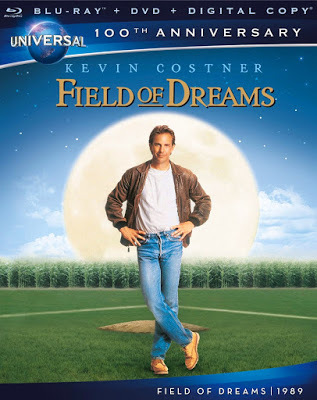
Published on April 15, 2016 09:00
April 12, 2016
More Tales from the Crypt (or, more accurately, the vaults)
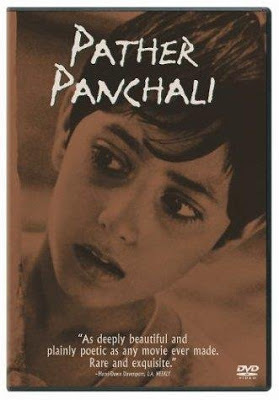
When last heard from, Beverly in Movieland had just toured the storage vaults at Hollywood’s Pickford Center for Motion Picture Study. It was a fascinating experience, but there was much more to come. After we enjoyed the musical pleasures of the American Fotoplayer (complete with auto horn and whoopee whistle interjections), we were ushered into the spacious Linwood Dunn Theater for a demonstration of what the Academy of Motion Picture Arts and Sciences does best. The Academy has preserved films of many nations, everything from Rashomon to Bambi Meets Godzilla. But one of its proudest achievements has been restoring the work of the great Bengali director, Satyajit Ray. Ray’s Apu Trilogy consists of three films (beginning with 1955’s Pather Panchali) that capture life in rural India in glowing black-and-white. The films, which had been hailed by cinephiles the world over, suffered a devastating blow when the British facility in which the original negatives were stored caught fire. An Academy-produced documentary, Saving the Apu Trilogy, showed us just how badly the films were damaged: their sprockets were gone, and many sections were warped or fused together. Whole reels looked like they’d been barbecued to a crisp. The Academy poured its resources into the problem, and – with the help of a special lab in Bologna, Italy – managed to save the bulk of Ray’s masterwork.
An unexpected part of the Academy archive is its collection of home movies, which show Hollywood’s legendary movers and shakers at work and at play. We saw Gary Cooper and famous art director Cedric Gibbons on the tennis court, Marlene Dietrich socializing with friends, and Marilyn Monroe cozying up to a fluffy pup on the set of The Misfits. Early images of a sleepy Hollywood Blvd. were priceless. And the son of the great Fayard Nicholas (one of two tap-dancing Nicholas brothers) came up to the podium to introduce footage of his father hanging out with his uncle Harold, and Harold’s beautiful bride, Dorothy Dandridge.
Because the Academy is also interested in cinematic innovation, we watched a 1956 short called “The Miracle of Todd-AO,” designed to promote a new wide-screen 70mm format. Inevitably, we were taken along on a queasy-making roller-coaster ride, watched skiers swoosh down the slopes of Sun Valley, and joined in a motorcycle chase through the hills of San Francisco, more than a decade before Bullitt. The whole thing ended in an unexpected commercial for an upcoming Todd-AO release, the screen version of Rodgers and Hammerstein’s Oklahoma!
I also delighted in two short films from the Academy collection, both of them featuring cats. One, made by Gus Van Sant, was a live-action short capturing a pet feline trying to chase down a patch of sunlight. The other, done in spectacularly fluid animation by Sara Petty back in 1978, shows two Siamese cats cavorting in a delightfully sinister way. It’s called “Furies,” and I could see why. Petty apparently made many animated shorts in the course of her career, but a break-in at her storage locker tragically robbed the world of much of her talent. Just one more reason that we need film archives as repositories for great works of cinematic art.
The big news for film lovers is that the Academy of Motion Picture Arts and Sciences is finally taking steps to share its priceless collections with the public. For years Angelenos have bemoaned the lack of a serious movie museum in the town that movies built. Now construction is actually underway on L.A.’s Miracle Mile. We‘re promised an “immersive environment” that will help visitors explore the dream factory.
Bulletins as they break!
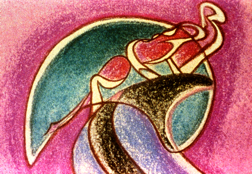 From Sara Petty's "Furies"
From Sara Petty's "Furies"
Published on April 12, 2016 11:48
April 8, 2016
The Academy’s Pickford Center, Where Movies Get the Red Carpet Treatment
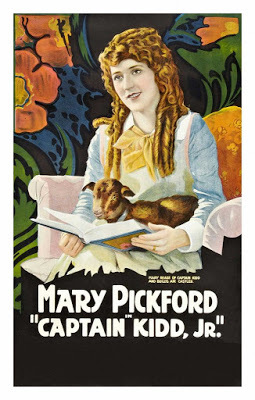
Of course we all know that the Academy of Motion Picture Arts and Sciences annually stages the Oscar ceremony. But the organization, founded in 1927, does far more than roll out the red carpet for celebrities in fancy dress. Last night I was invited for a tour of the Pickford Center for Motion Picture Study, which since 1991 has been the Academy’s headquarters for preserving and protecting motion picture history.
The Pickford Center, named after cinema pioneer Mary Pickford, is located on Vine Street in Hollywood. Back in 1948 this building was a television studio. Today it is a temple dedicated to the cinematic arts. Its walls are lined with rare photographs, some of them historic and others quite new. The Pickford Center has just received -- and now proudly displays – a series of candid shots snapped by Jeff Bridges, who has chronicled his career by way of behind-the-scenes images of fellow actors, crew members, and stunt performers. They’re well worth a gander.
Near the entrance to the Pickford Center stands a priceless artifact, an American Fotoplayer from 1907. The Fotoplayer was designed to provide accompaniment for silent films in smaller theatres that couldn’t afford a live orchestra. Imagine a sort of extreme player-piano, with attached wings that supply a full set of percussion instruments, along with such extras as an auto horn, a whoopee whistle, a siren, and a baby’s cry. Only twelve of these beauties are left in the world, and the Academy’s is the only one not in private hands. We were lucky to be given an impromptu concert, with the Fotoplayer (nimbly manipulated by a member of the Academy staff) adding music and sound effects to a 1904 Georges Méliès short, “Tchin-Chao The Chinese Conjuror.” I’m not sure what was most fascinating: the conjuror’s hokey magic tricks, the casual racism of the “Chinese” performers, or the way Méliès used the film medium to enhance the magician’s stage trickery. But listening to the Fotoplayer was, in any case, delightful.
Because the Pickford Center is a film archive, we were also ushered through the high-ceiling vaults in which movies from all over the world are stored. The first vault, in which the temperature is set at 60 degrees Fahrenheit, contains unprocessed films that will wait years (or sometimes decades) to be sorted by the center’s archivists. A second vault, ten degrees cooler, holds stacks of processed films. (I spotted reels from such diverse flicks as Shaft, Patton, and Anna and the King.) We were not escorted through the chilliest vault (45 degrees Fahrenheit), the one holding camera negatives. But we learned that the scent of vinegar in the air is a telltale sign of a film beginning to deteriorate. In all, the Pickford vaults contain 2000 items, or over 500 tons of film materials. Another tidbit: in case of fire (heaven forbid!), the Pickford has a special gas-based fire suppression system. Conventional sprinklers are avoided, because water can destroy film stock as quickly as fire can.
The Pickford is not just about film storage. The center collects artifacts, like a full array of Harpo Marx’s comic props (a rubber chicken among them), donated by his son. And a separate department contributes to the science of filmmaking by, among other things, working to create new standards for digitally-shot movies. We all gasped at the results of the new ACES imaging system that greatly increases the dynamic range of today’s color photography. Then there’s the Pickford’s much-admired restoration work, which enables even classics from Cuba to get the red carpet treatment.
But you ain’t read nothing yet. More to come!
 Georges Melies as Tchin-Chao, the Chinese Conjuror
Georges Melies as Tchin-Chao, the Chinese Conjuror
Published on April 08, 2016 10:20
April 5, 2016
My Roger Corman Life: A 90th Birthday Tribute

Roger Corman changed my life. Today, remarkably, the famous supplier of B-movies to the world’s youth market turns 90 (and I’m not feeling so young myself). My relationship with Roger has been complicated, and I’m sure the same holds true for most of his employees, past and present. As one of them told me, “Just when you think he’s the shit of the world, he turns around and does something of extraordinary niceness.” True -- yet his magnanimity can’t always be trusted.
I met Roger Corman in 1973, when he interviewed me for a job at New World Pictures. He had gotten my name through the Phi Beta Kappa chapter of UCLA, where I was finishing up a doctorate in English. It was typical of Roger to seek out someone with lofty academic credentials: he loved to shore up his credibility by hiring underlings with fancy degrees and titles.
On that first morning, I was impressed (as everyone always was) by Corman’s handsome face, deep voice, and good-humored manner. We had a serious talk about motion picture aesthetics, and he told me I’d need to promise to read and discuss with him Siegfried Kracauer’s Theory of Film (1960). Of course I complied, wondering how this ponderous tome would shed light on the making of monster movies and biker flicks. I’m still wondering. He never mentioned Kracauer again.
After sixteen lively months as Corman’s all-purpose assistant, I left New World in 1975 to return to academia. Years later, I was persuaded by Roger to become the story editor at his re-vamped company, Concorde-New Horizons. Signing on in 1986, I once again plunged into the madcap world of low-budget filmmaking. My duties included overseeing writers, consulting with young directors, and earning the occasional script credit on horror films and thrillers that needed emergency fixes. Yes, I played a few bit parts too, in all of which I kept my clothes on. But one April afternoon in 1994, Corman called me into his office, where we had another pivotal conversation.
Roger told me his fears for his company’s financial health. (This was nothing new; he had these concerns every week or two.) Then he brought up the plight of a close friend of mine. She had been an early Corman employee and had taught me a great deal when I first arrived at New World. Later, she’d moved into more lucrative positions with more prestigious companies. But she’d hit on hard times, and was now desperate for work. It was a nice gesture on Roger’s part to make a place for her on his staff. It was not so nice, however, to give her my job.
So after eight years of loyal service, I was rewarded with two weeks’ notice. All the while Roger insisted that I had been an exemplary employee. He told me to write myself a glowing recommendation (“Don’t be modest,” he said), promised to sign it, and did. I later discovered that in typically shrewd Corman fashion, he’d hired my old friend on a cut-rate basis. Which meant that while lending a hand to someone in need, he was actually saving the difference between her salary and my own. So his altruism (though undoubtedly genuine) was also to his material benefit. Such is Roger Corman: the buck stops with him, in more ways than one.
No, I don’t hold a grudge. My memories from my Corman years are priceless. And writing Roger Corman: Blood-Sucking Vampires, Flesh-Eating Cockroaches, and Driller Killers has given me a career I never anticipated. So I’d say it’s been a fair trade.
Happy birthday, Roger!

Published on April 05, 2016 11:53
April 1, 2016
Becoming Patty Duke; Becoming Anna

When I was in high school, Patty Duke was not a universal favorite. We serious drama kids of course looked down our noses at her amiable “twin-cousins” sitcom, The Patty Duke Show. True, there was also her gripping portrayal of the blind and deaf young Helen Keller in 1962’s film version of William Gibson’s The Miracle Worker. The role had made her (at age 16) the then-youngest competitive winner in Oscar history, but we were reluctant to give her too much praise. After all, two of our classmates had just resoundingly won first prize at the Los Angeles County drama festival by performing a dramatic scene from The Miracle Worker. Our teacher plainly preferred the work of his student -- a teacher’s pet type -- to that of the young actress he disparagingly nicknamed “Debbie Fink.” (He’d borrowed this name from an obnoxious child-star character in Al Capp’s “Li’l Abner” comic strip.) If our dramatic mentor hadn’t much use for Patty Duke’s s triumph, who were we to argue?
Now that Duke has passed on, at the shockingly young age of sixty-nine, it’s time for me to rethink her career accomplishments. Unlike Helen Keller she was neither deaf nor blind. Still, she had some serious physical and emotional obstacles to overcome. And, much like Keller herself, she surmounted them magnificently.
Duke’s path to Hollywood was via Broadway, where (at age 13) she created the Helen Keller role on stage. To get the part, she’d been carefully coached by her talent managers, who’d assembled a stable of child actors. They’d come into the life of Anna Marie Duke when she was eight, essentially taking over from her alcoholic father and clinically depressed mother. Hoping to remake her in the mold of another child star, Patty McCormack (the evil little girl in The Bad Seed), they changed Anna’s name to Patty Duke, abruptly announcing that “Anna Marie is dead; you're Patty now.”
A 1987 autobiography, Call Me Anna, that she wrote with drama critic Kenneth Turan details years of mistreatment at the hands of her unscrupulous managers, who financially exploited her, while also introducing her early on to alcohol and prescription medications. After the cancellation of The Patty Duke Show, she made a surprising jump (at 21) to the over-the-top role of Neely, an actress prone to booze, drugs, and cat fights in Valley of the Dolls. (Here’s an unforgettable sample of her campy tough-gal dialogue, as she discusses her latest flame: “Ted Casablanca is NOT a fag . . . and I'm the dame who can prove it.”) The role of Neely is loosely based on the life of Judy Garland, but an ample share of Patty Duke’s own misery seeps into her performance as well.
It was not until 1982, when she was in her thirties, that Duke was diagnosed with bipolar disorder, for which she was successfully treated. From that time onward, she became a strong public advocate for mental health issues. She also served three years as president of the Screen Actors Guild, while continuing to earn respect for a wide variety of acting roles. Her domestic life was often rocky, but apparently her last years were peaceful ones. Following her death, son Sean Astin paid tribute to “our beloved wife, mother, grandmother, matriarch and the exquisite artist, humanitarian, and champion for mental health.”
The Miracle Worker was the rare popular film built around the relationship of two females. Anne Bancroft, five years before The Graduate, won her Oscar for playing Helen Keller’s devoted teacher, Annie Sullivan. So sad that we have now lost both these great actresses.
<
Published on April 01, 2016 11:15
March 29, 2016
Is Hollywood Ready for “Ready Player One”?
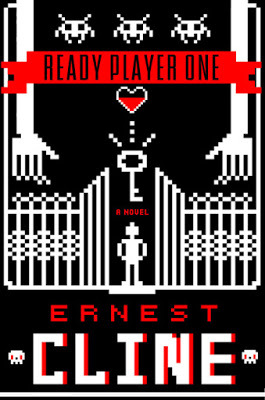
When I read that Steven Spielberg is about to start shooting a screen adaptation of Ernest Cline’s Ready Player One, I felt obliged to check out the 2011 source novel. Normally I don’t spend much time reading science fiction, nor do I indulge in video-gaming. But the subject matter of my son’s big new theatre piece has convinced me to become slightly more knowledgeable about avatars and virtual-reality quests. And since I consider Spielberg one of our most masterful filmmakers, the projects he chooses are always of interest.
Despite the availability these days of sophisticated CGI effects, Ready Player One is not going to be easy to adapt for the screen. It’s a huge story, one that for quite a while didn’t entirely hold my interest because so much explanation was needed to set it in motion. Cline posits an era in the not-too-distant future when the daily lives of average citizens are so grim that they are only too happy to send most of their waking hours online. The first-person narrator, Wade Watts, is (of course) a computer genius, but one who lives in squalor in a miserable place called “the Stacks.” That’s why he camps out in a secret hiding place, from whence he is able to log into Oasis, an all-purpose on-line universe that provides him with schooling, entertainment, and much more.
In the course of the novel Wade’s trusty avatar, Parzival, will embark on a fantastic quest into virtual outer-space to locate the mysterious keys that unlock the shadowy gates that will lead one lucky winner to claim the fabulous fortune of Oasis’s deceased founder, James Halliday. Along the way, Parzival will find allies, rivals, and a group of sophisticated thugs who are quite ready to create mayhem, either in the virtual world or the real one. There’s the usual disconnect between the avatars playing the game and the honest-to-goodness human beings who control them, which leads me to wonder how Spielberg plans to differentiate between two separate realities with interlocking sets of characters. (James Cameron did a brilliant job of achieving this with Avatar; I wonder if Spielberg has something similar in mind, or has devised his own solution.)
Though, frankly, some of the solemnity of Parzival’s quest seems a bit silly to me, there’s another aspect to the book that has me tickled. We’re to understand that all of Oasis is a figment of James Halliday’s fertile imagination. And Halliday, it turns out, was obsessive about the Eighties, when he was young, frisky, and a binge consumer of popular culture. So some of Parzival’s quest-time is spent having to re-enact Eighties flicks like WarGames, or dodging monsters, the likes of Mechagodzilla, who lurch straight out of Japanese cinema. One planet in the Oasis virtual universe is build along the lines of the iconic Tyrell Building from Blade Runner, and Wade briefly takes a breather by flying to Planet Zemeckis and surmounting a small challenge that earns him a Flying DeLorean.
I enjoyed the outrageousness of all that, and can see how Spielberg would be intrigued and amused by the opportunity to dodge in and out of other people’s movies (legalities permitting). But, as a screenwriting instructor I can’t help wondering how he plans to manage the tone of a story that’s sometimes serious to the point of tragedy and sometimes totally goofy.
The book also introduced me to a Japanese term: hikiko mori. I find myself worrying about those poor souls who shun reality to withdraw into the fantasy world of their computers. In Ernest Cline’s dark future, I guess it can’t be helped.
Published on March 29, 2016 09:36
March 25, 2016
I Like a Gershwin Tune – How About You?

This week I had the pleasure of spending an evening with Alexis Gershwin and company. Alexis is the niece of the great George and Ira Gershwin, the daughter of their younger sister. And her show at the Catalina Jazz Club in Hollywood, in which she was backed by terrific singers and a spectacular little combo, put the spotlight on the romantic songs of the Gershwins, classics like “S’wonderful” and “They Can’t Take That Away from Me.”
Afterwards, with Gershwin melodies running through my brain, I began to wonder the extent to which George and Ira’s songs—often written for the Broadway stage—were featured in movies. I knew the brothers were popular with filmmakers, but I didn’t expect what I found: George’s musical compositions are listed on the invaluable Internet Movie Database as being featured on 598 movie and TV soundtracks. His lyricist brother Ira, who lived a good deal longer and worked with other composers after George’s untimely death, has 480 soundtrack credits. That’s a whole lot of Gershwin, dating back to the 1930s. I can’t go into every film that’s been graced by Gerhswin music, but here comes a sampling of some of my very favorites.
Gershwin standards like “Embraceable You” and “I Got Rhythm” were featured in two different versions of Girl Crazy, based on a Broadway play that introduced Ethel Merman and made Ginger Rogers a star. The first movie adaptation—totally forgettable—was made in 1932, molded to the talents of a comedy team known as Wheeler & Woolsey. More distinctive was a 1943 version starring Mickey Rooney and Judy Garland, who performed a soulful rendition of “But Not for Me.” (There’s also a 1965 variation on Girl Crazy, retitled When the Boys Meet the Girls. It stars Connie Francis, and features the unlikely team of Herman’s Hermits, Sam the Sham and the Pharoahs, Louis Armstrong, and Liberace. Wow!)
Some of the Gershwins’ best songs also show up in Fred Astaire/ Ginger Rogers movies like 1937’s Shall We Dance. Years later, Astaire teamed with the beautiful young Audrey Hepburn to sing and dance to Gershwin music in 1957’s Funny Face. Hepburn is hardly a trained singer, but I’ll always remember her wistful “How Long Has This Been Going On?” Another Fifties gem is An American in Paris, which features not only Gershwin songs but a climactic dream ballet danced by Gene Kelly and Leslie Caron to the full “American in Paris” score. In 1959, the operatic Porgy and Bess was brought to the screen in a production (starring Sidney Poitier) that is still generating controversy.
Woody Allen, who associates Gershwin music with his beloved New York City, brilliantly used George’s “Rhapsody in Blue” in the opening to one of his best films, 1979’s Manhattan. Two decades later, George and Ira’s songs figure prominently in every music teacher’s favorite flick, Mr. Holland’s Opus. The singing of “Someone to Watch Over Me” by a talented high school student who’s falling for her teacher is for me one of that film’s highlights.
When Harry Met Sally (1989) also uses the Gershwins (as performed by Harry Connick, Jr.) to evoke romance, via tunes like “Our Love is Here to Stay” and the witty “Let’s Call the Whole Thing Off.” And when Disney, in 1999, dared to introduce its Fantasia 2000, it chose “Rhapsody in Blue” as the inspiration for an animated segment done in the style of Al Hirschfeld’s jazzy Broadway caricatures. Though Fantasia 2000 never reached the heights of the 1940 original, “Rhapsody in Blue” is its finest creation. In a word, “S’wonderful”!
Published on March 25, 2016 14:32
March 22, 2016
Sally Field’s “Hello, My Name is Doris” (& other tales from the Over-the-Hill Gang)
I just saw a trailer for an upcoming Susan Sarandon flick, an indie called The Meddler. It played at the Toronto International Film Festival last September, and will open in general release next month. Apparently the great Sarandon (a 1996 Oscar winner as a crusading nun in Dead Man Walking) here plays a widow who follows her grown daughter (Rose Byrne) to Los Angeles, in search of a new life for herself. Recent Oscar-winner J.K. Simmons is on hand to show her around SoCal on his Harley. It sounds like fun.
But, admittedly, I feel I’ve seen this movie before. Seems like in the past year every one of Hollywood’s aging leading ladies (with the notable exception of Meryl Streep) has taken on the role of a lonely widow -- or lonely spinster – who risks everything for love. The movies are hardly identical: they are all very much shaped by the personalities of their stars. And I’m glad that those stars are still, after all these years, able to find meaty roles. The generally underused Blythe Danner is luminous as a still-elegant widow romanced by Sam Elliott in I’ll See You in My Dreams. Lily Tomlin brings her cantankerous charm to bear on Grandma, a film that manages to contain some surprises (and, yes, Sam Elliott too). But I feel a nagging sorrow that stories featuring older women all cover so much of the same terrain. If you’re an actress past a certain age, loneliness and a longing for love seem to be just about all you can expect in your movie roles.
The latest Hollywood leading lady to star in a lonely spinster part is Sally Field. Frankly, I hate to think of Field as old, since she and I are of the same generation (and I certainly remember her various “cute” roles as TV’s Gidget and The Flying Nun.) Happily, Sally Field is still petite and cute, and so Hello, My Name is Doris is built around her exuberant persona. Doris is a Staten Island dweller who once upon a time gave up her marriage plans in order to keep house for her mother. Now, long years later, that mother is newly dead, and Doris faces an empty life in the cluttered bungalow full of trash-bin “treasures” she can’t bear to discard. But — always ready to find the silver lining – she develops a crush on a much younger guy she meets at work, and her ready-for-anything spirit (abetted by her eccentric but charming fashion choices) briefly gains her entrée into a world of Manhattan sophisticates. Her sister-in-law, a sour realist, bluntly opines that these hipsters merely see Doris as an “art project.”And maybe Sis is right.
Doris does find love, sort of. And though the ending of the film is ambiguous, I’m hoping the character’s pluck survives the changes that lie in store for her. Anyway, thirty years after Places in the Heart and nearly forty years after Norma Rae, it’s wonderful to see Sally Field at the center of a drama once again. Those two roles won her Best Actress Oscars. In 2012 she nabbed another nomination, this time for playing Mary Todd Lincoln opposite Daniel Day Lewis in Spielberg’s Lincoln. I very much admired her work in that uncharacteristically somber role. Still, she’s irresistible when she’s perky, so I hope Hello, My Name is Doris brings her many more opportunities. Maybe next time she’ll be looking for something other than love. I certainly hope so. Because I like her . . . I really like her!
Published on March 22, 2016 12:15
Beverly in Movieland
I write twice weekly, covering topics relating to movies, moviemaking, and growing up Hollywood-adjacent. I believe that movies can change lives, and I'm always happy to hear from readers who'd like t
I write twice weekly, covering topics relating to movies, moviemaking, and growing up Hollywood-adjacent. I believe that movies can change lives, and I'm always happy to hear from readers who'd like to discuss that point.
...more
- Beverly Gray's profile
- 10 followers



